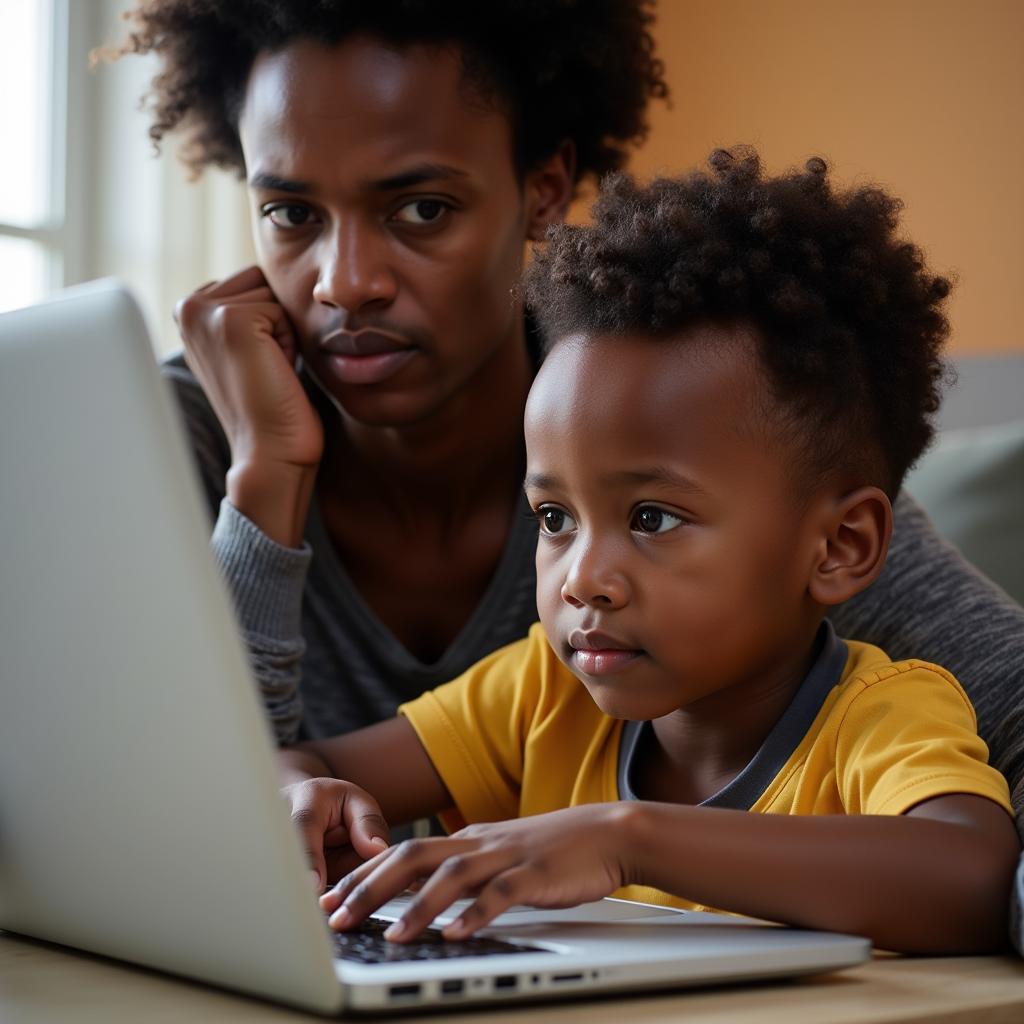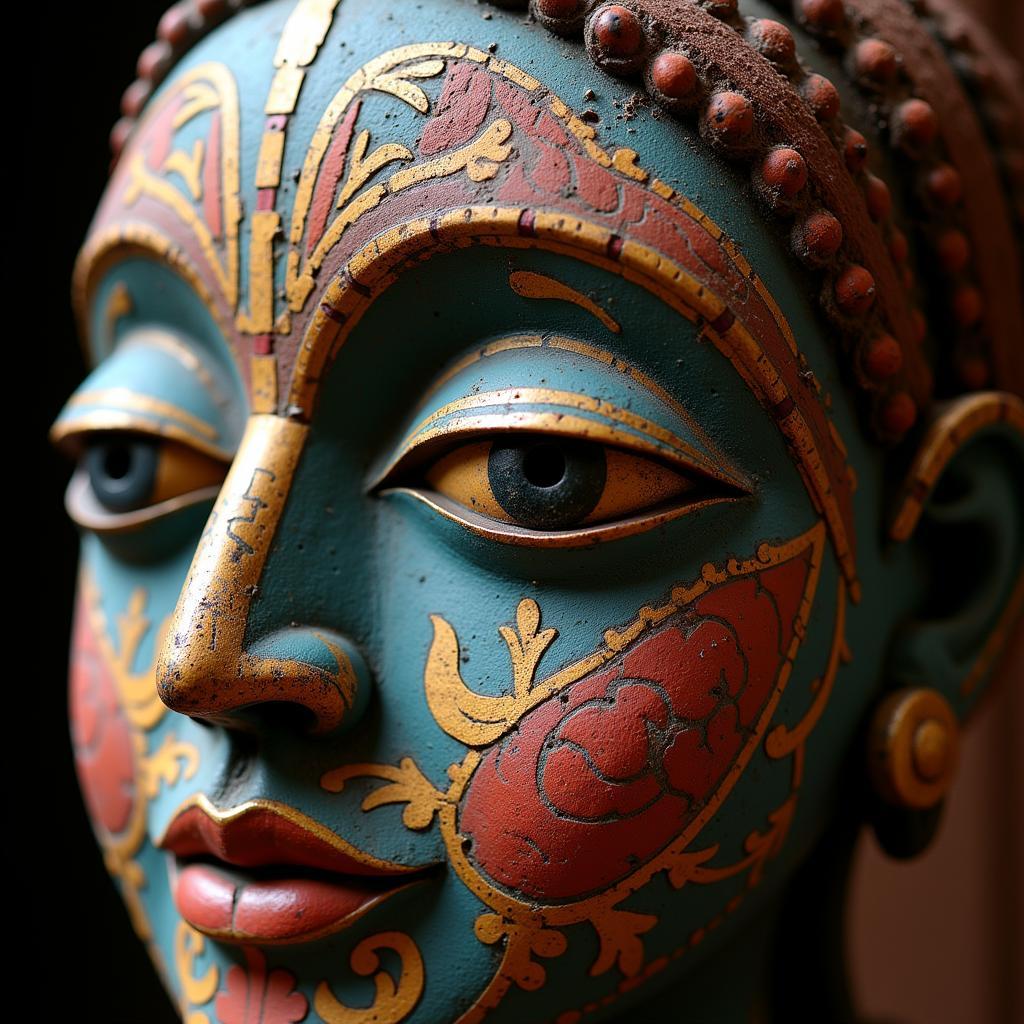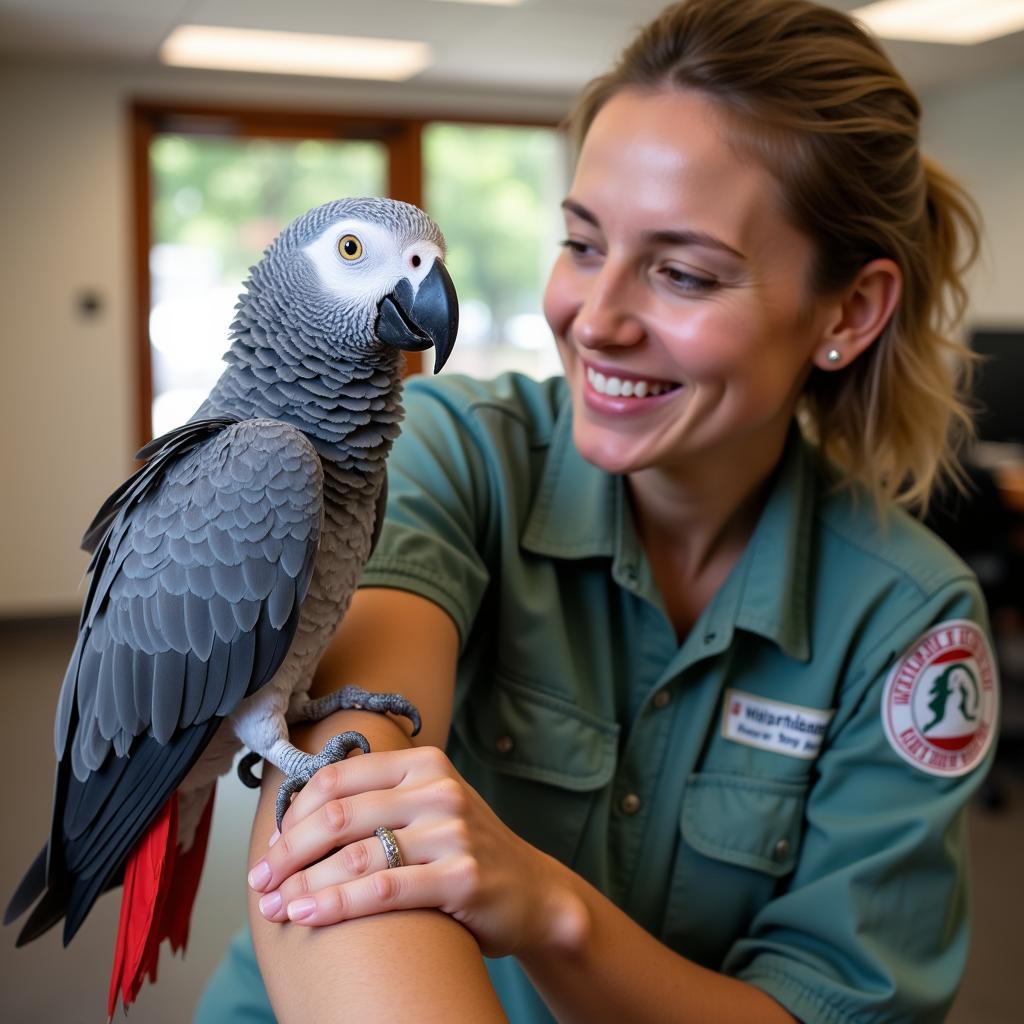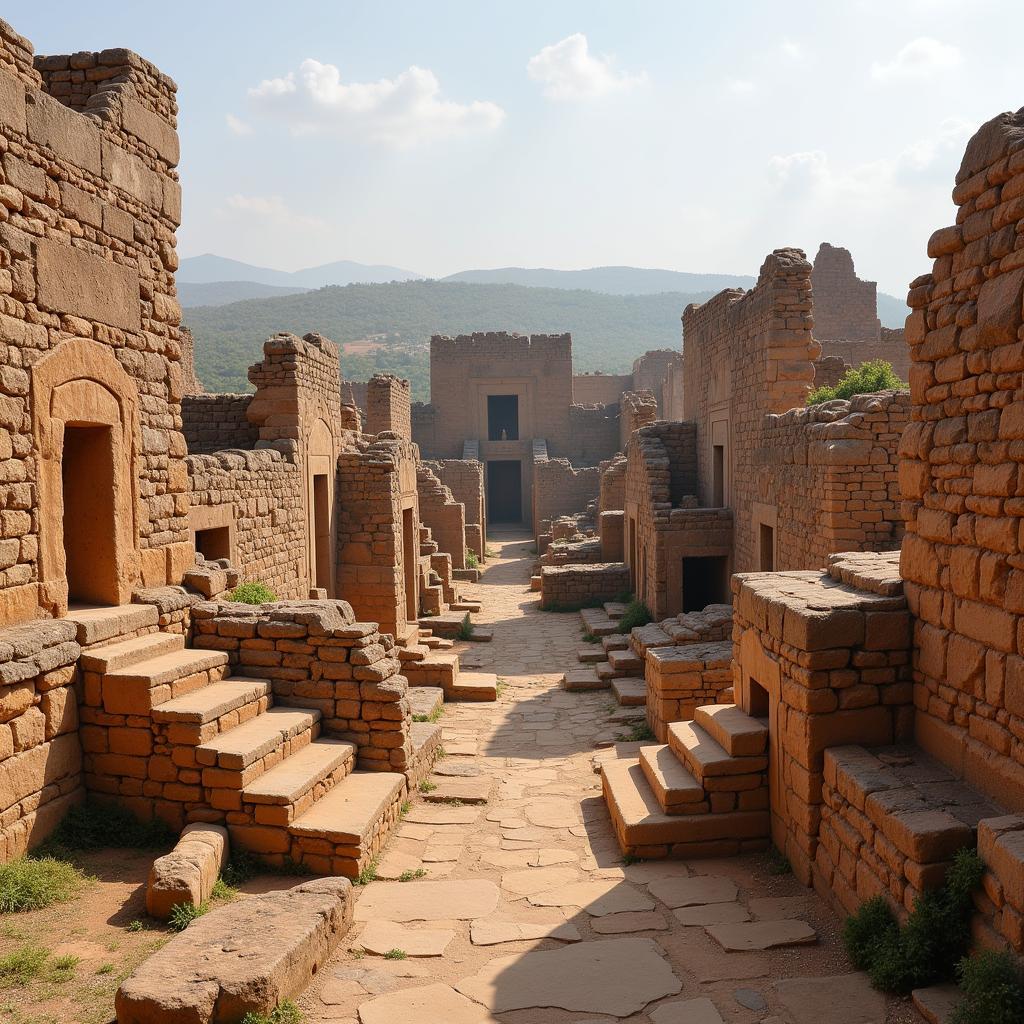African Child Eye Checkup: A Look in Black and White
An African child eye checkup, captured in stark black and white, reveals more than just a medical examination; it speaks volumes about access to healthcare, cultural nuances, and the future of a generation. These images, often poignant and powerful, highlight the challenges and triumphs in ensuring healthy vision for children across the diverse landscapes of Africa.
The Importance of Early Eye Checkups for African Children
Early detection of eye problems in African children is crucial for preventing lifelong vision impairment. Many conditions, if left untreated, can lead to irreversible damage. A simple black and white photo of an eye checkup can symbolize this crucial intervention. Regular screenings can identify issues like refractive errors, amblyopia (lazy eye), and even more serious conditions like cataracts and glaucoma. Access to these screenings, however, remains a significant hurdle in many parts of Africa.
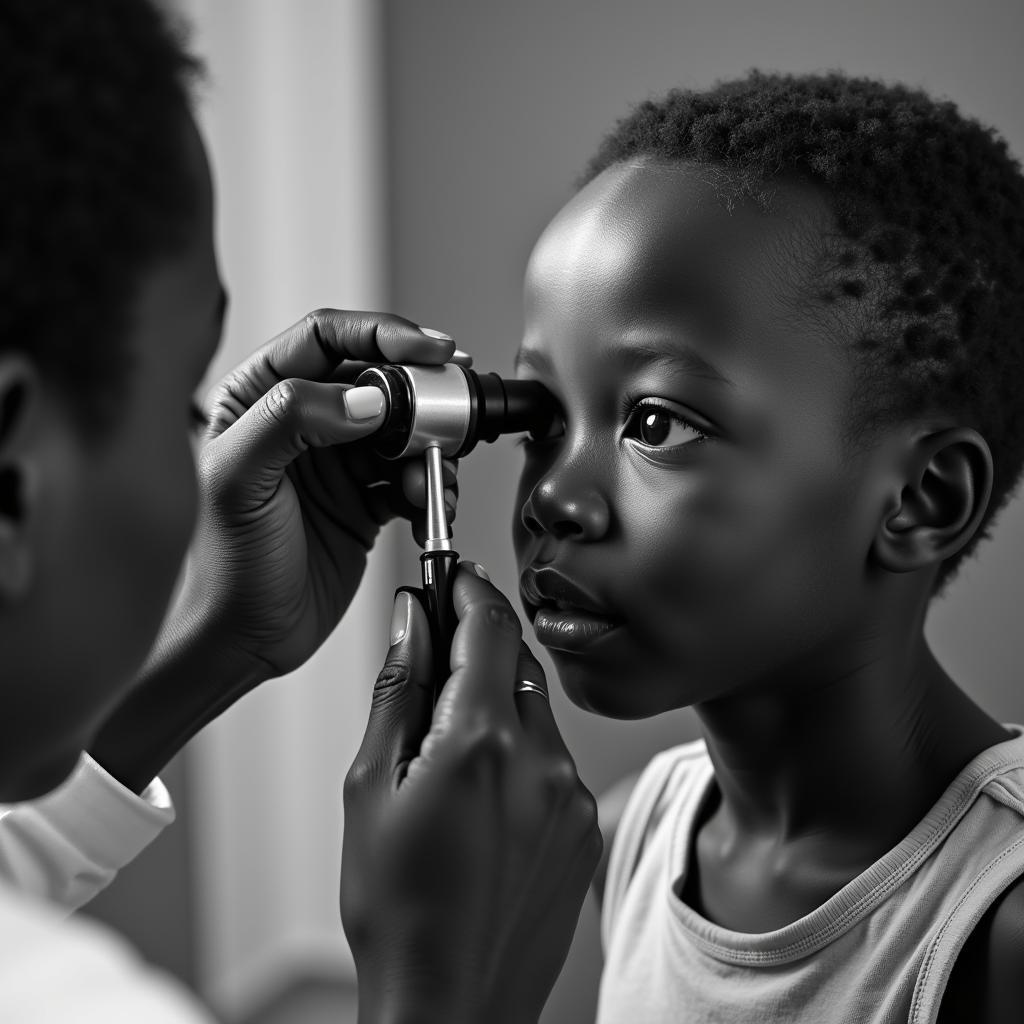 African Child Receiving an Eye Exam (Black and White Photo)
African Child Receiving an Eye Exam (Black and White Photo)
Challenges in Accessing Eye Care
Geographic isolation, poverty, and limited healthcare infrastructure contribute to the challenges faced by many African communities in accessing eye care. Transportation costs, lack of awareness about the importance of eye health, and cultural beliefs can also act as barriers. These factors often result in delayed or missed diagnoses, particularly in rural areas. Innovative solutions, including mobile eye clinics and community health worker training, are being implemented to bridge this gap.
Capturing the Story: Black and White Photography
The use of black and white photography to document African child eye checkups adds a layer of depth and emotion to the narrative. Stripped of color, the focus shifts to the expressions on the faces of the children, the concentration of the medical professionals, and the stark reality of the situation. These images transcend the purely clinical and become a powerful advocacy tool for raising awareness and driving change.
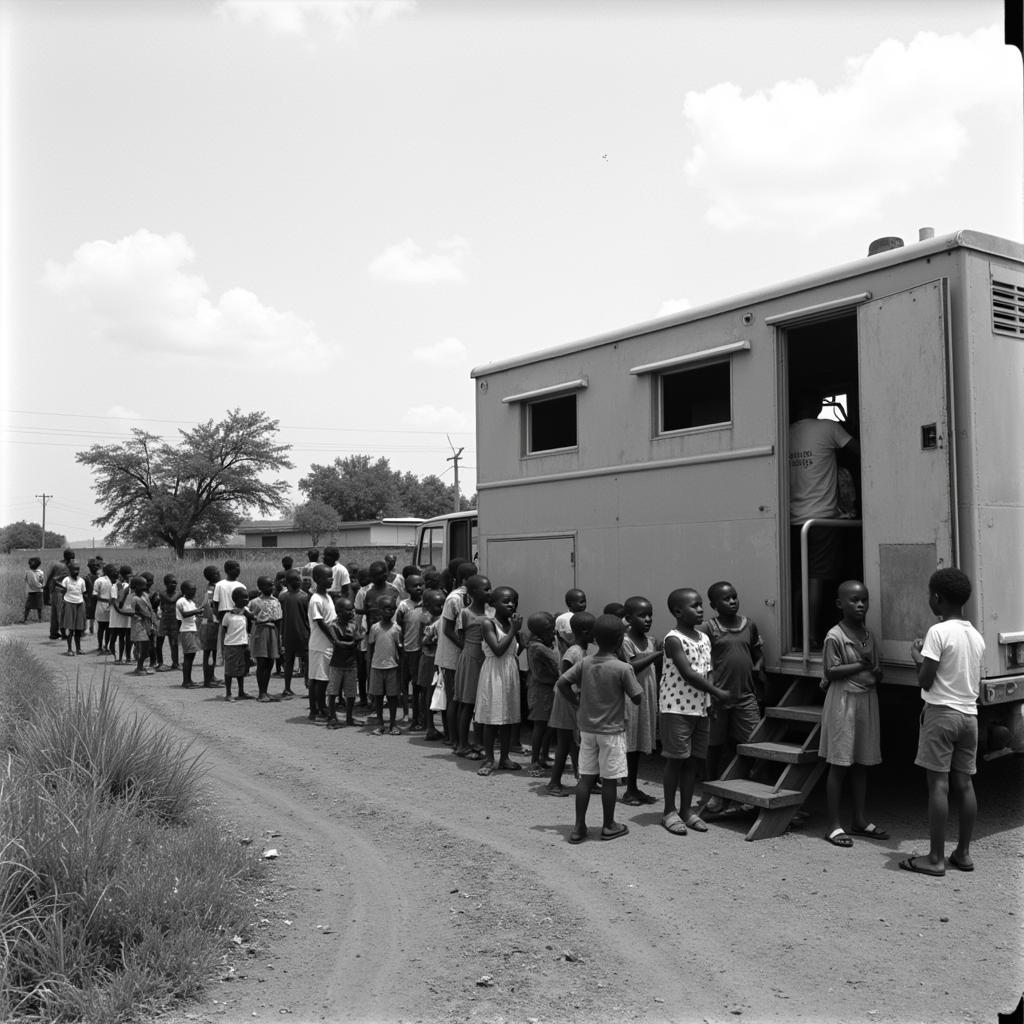 Mobile Eye Clinic in Rural Africa (Black and White Photo)
Mobile Eye Clinic in Rural Africa (Black and White Photo)
The Power of Visual Storytelling
Black and white photography has a unique ability to convey emotion and highlight the human element within a complex issue like access to healthcare. These images can resonate with audiences on a deeper level, sparking empathy and motivating action. They tell stories of resilience, hope, and the unwavering dedication of healthcare workers striving to make a difference in the lives of African children.
A Brighter Future: Investing in Eye Health
Investing in eye health for African children is not just about improving individual lives; it’s about investing in the future of the continent. Good vision is essential for education, economic development, and overall well-being. By addressing the challenges in accessing eye care and promoting early detection, we can empower future generations to reach their full potential.
Sustainable Solutions
Long-term, sustainable solutions require a multi-faceted approach, involving government initiatives, non-profit organizations, and community engagement. Training local eye care professionals, establishing sustainable supply chains for eyeglasses and medication, and integrating eye health into primary healthcare services are key components of a comprehensive strategy.
Conclusion
The black and white image of an African child eye checkup serves as a powerful reminder of the importance of accessible eye care. By investing in early detection and sustainable solutions, we can ensure a brighter future for African children and empower them to thrive.
FAQ
- What are the common eye problems affecting African children?
- How can I support organizations working to improve eye health in Africa?
- What are the long-term consequences of untreated eye conditions in children?
- Are there any government initiatives focused on eye health in Africa?
- How can technology be used to improve access to eye care in remote areas?
- What are the cultural beliefs surrounding eye health in different African communities?
- How can we raise awareness about the importance of regular eye checkups for children?
Suggested further reading on African Life:
- The Impact of Malnutrition on Child Vision
- Traditional Healing Practices and Eye Health in Africa
- The Role of Education in Promoting Eye Health Awareness
For assistance, please contact us: Phone: +255768904061, Email: [email protected], or visit us at Mbarali DC Mawindi, Kangaga, Tanzania. We have a 24/7 customer service team.
